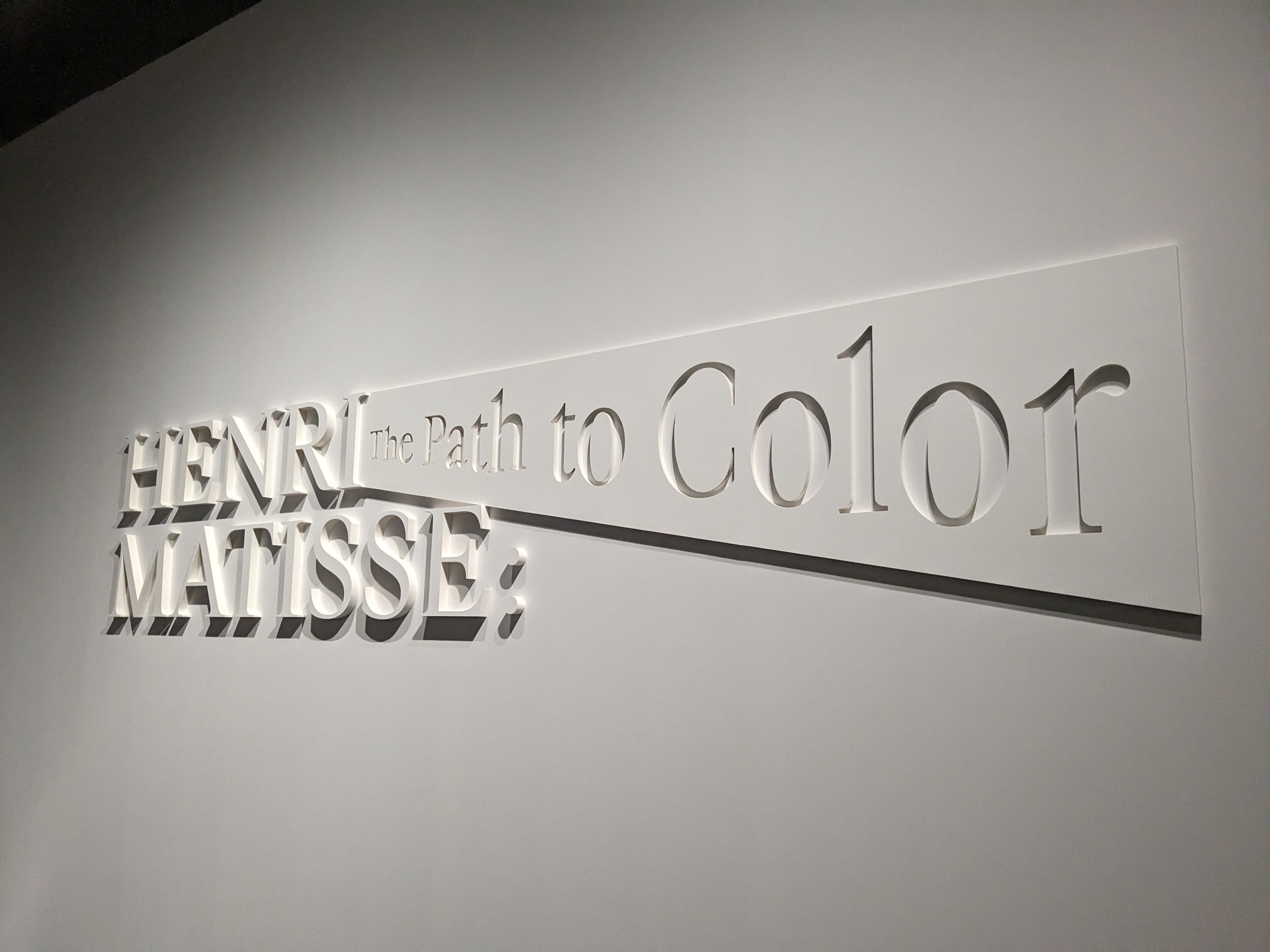Henri Matisse "Woman with a hat"
Posted on Mon 22 January 2024 in art
Introduction
At the end of 2023, I visited San Francisco Museum of Modern Art (SFMOFA). I encountered a group of elementary school students who had just finished their tour when I just entered the museum. As I ascended to the second stair, I found myself imagining what the students might have seen and thought. My primary goal for the visit was to view "Woman with a hat" by Henri Matisse, which is one piece of the SFMOMA collection. I was thrilled to view the paining that locates alongside an outstanding array of the modern art paintings.
Exhibition at Tokyo Metropolitan Art Museum
My impetus to see the painting traces back to May 2023. I went to Tokyo Metropolitan Art Museum to see the special exhibition featuring Matisse during the trip to Japan. The exhibition captivated me for two main reasons. First, it was a rare opportunitie to see so many Matisse's works in one place, which is about 150 paintings from the Centre Pompidou in Paris. Second, I had longed for seeing "Luxe, Calme et Volupté" in person, captivated by an audacious distribution of colors, and the painting came to the exhibition.

The exhibition offered a meaningful journey through a Matisse's life as an artist, from early Realism paintings to the late-life masterpiece, the Chapel of the Rosary. While Matisse is often celebrated as a pioneer of Fauvism and a magician of color, this exhibit showed that his focal point extended byyond color to include a deep exploration of form. For example, "The Back Ⅰ-Ⅳ" series representing a woman's back, reveals a trajectory from detailed contours to nearly abstract vertical lines, implying his quest to distill from itself. I sensed that Matisse might have been continually asking himself, "What is the minimum composition of the object in terms of colors and shapes?". This question would culminate in his cutouts and the chapel with their astonishing simplicity, though a choice would be partly influenced by his physical challenges in his later life. As a machine learning researcher specializing in representation learning, I have been fasciated by the minimal composition of objects. Discovering a possible kinship between Matisse's artistic inquiry and my own research interest was unexpectedly gratifying.
Interestingly, the exhibition featured few paintings from Matisse's Fauvist period. As I understand that Fauvism was only a brief phase in his long artistic journey, the observation just reflects my personal preference for that period. Curious to know where his famous Fauvist works, "Woman with a hat" and "Portrait of Madame Matisse (The green line)" are located, I found that the latter locates in Statens Museum for Kunst, while the former is it SFMOMA. That is why I have decided to visit SFMOMA to see the painting in person.
Woman with a hat

"Woman with a hat" represents a rebellion of color. Almost all the colors here are detached from reality; for instance, although Matisse's wife wore a black dress in real life, the painting presents it in a strikingly different color, as noted in the caption. I would like not to touch the origin of Fauvism as it has been discussed widely, but viewing "Luxe, Calme et Volupté" in Japan has reinforced my idea that Pointillism would have given a influence to Fauvism. Pointillist artists used complementary (often unrealistic) colors in tiny dots to enhance vibrancy. While Seurat, the founder of Pointillism, had put millions of tiny dots following the principle, later artists like Signac and Delaunay gradually increased the size of these dots and expanded their use of non-realistic colors. The evaluation may have sparked the question among artists: "Why limit color to what the object actually has?", paving the way for Fauvism. Given the transition and the Pointillism's influence on artists like Delaunay, Van Gogh, and Kandinsky, not only Matisse had the possibility to initiate Fauvism. However, Matisse alone achieved the unique balance of audacious color and beauty that defines the style. Hence, "Woman with a hat" stands as a monumental work marking the advent of Fauvism.